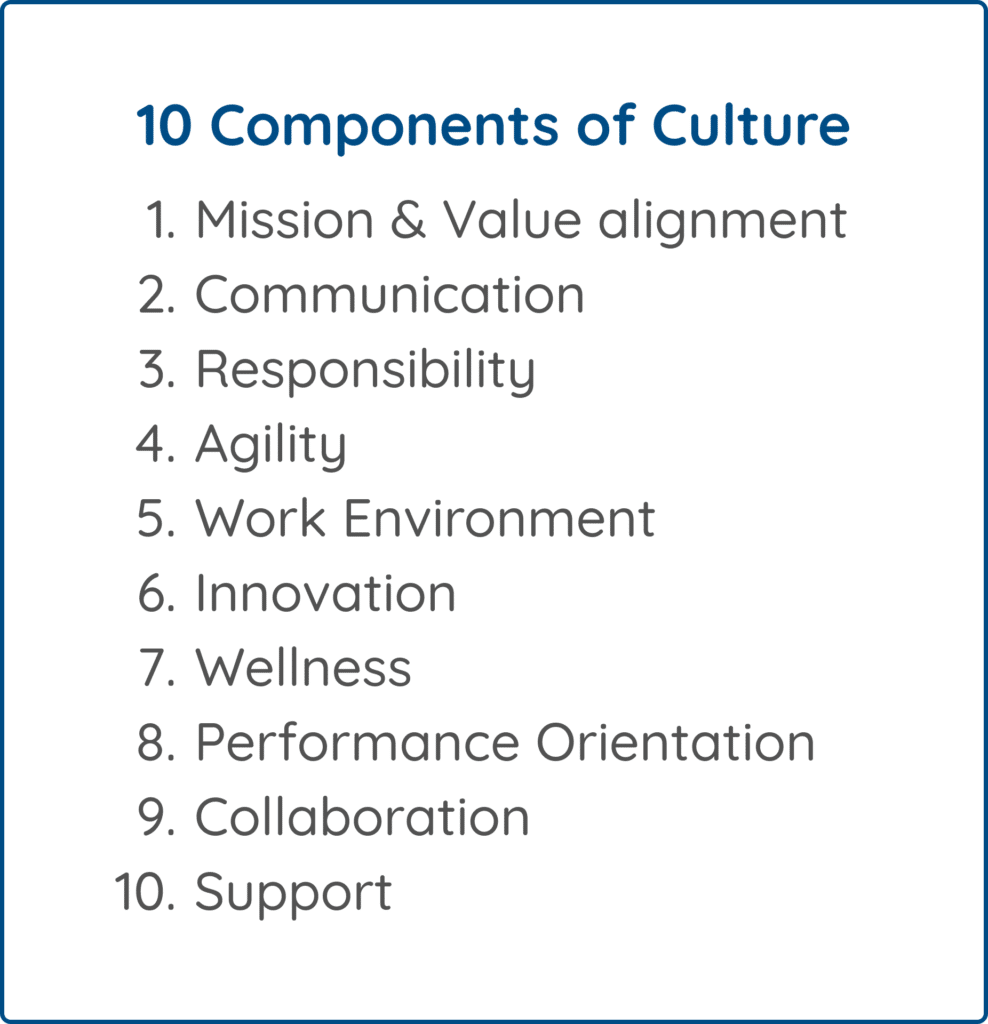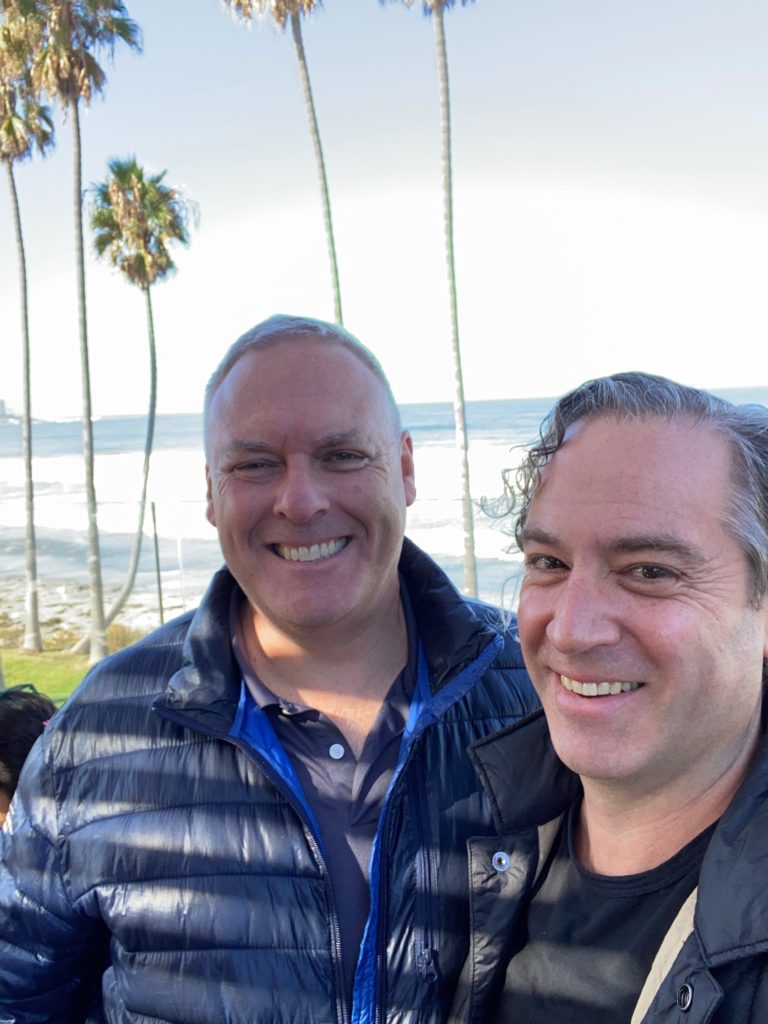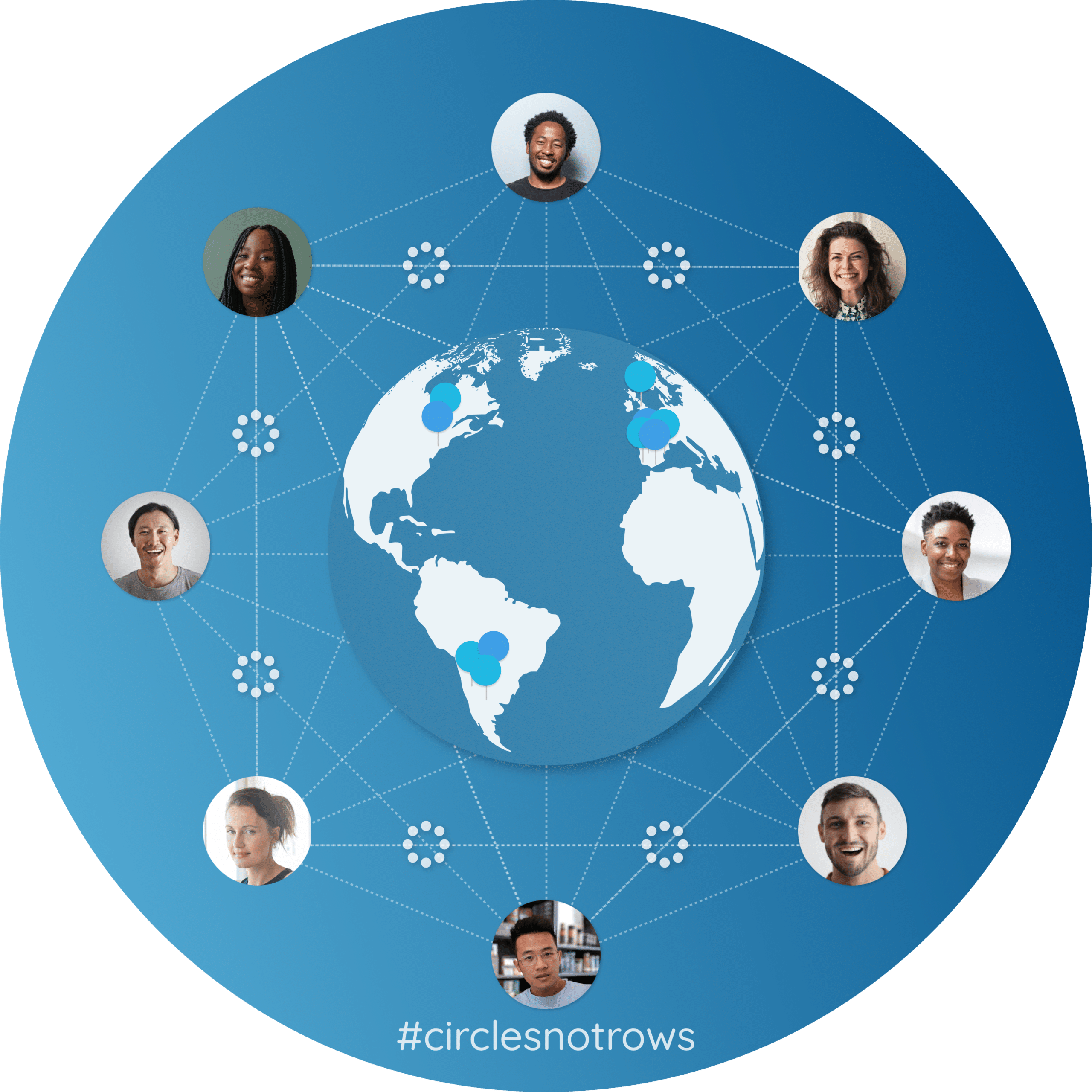Circl.es is a radically distributed workplace: Brooklyn, Buenos Aires, Saratoga Springs, Portland, Barcelona, London, Auckland, Canberra. Since we’ve grown these last two years, I’ve gone from knowing everyone to not having met most of our team, which can make establishing culture tricky. As a company builder, culture has always been a big deal to me; and, selfishly, important to get right so I can be happy at work. Today I’m seeing flaws in my old ideas about company culture, and also noticing one big missing piece: community.
There’s a ton of proof that culture-forward companies outperform others in sales growth, profitability and stock price. I’ve written a lot about culture, and it’s always helpful to start with a definition. I like Greg Besner’s book, Culture Quotient, in which he lays out ten components of culture. He also talks about Schein’s model, a diagram where cultural artifacts are visible above the surface and beliefs, values, and assumptions appear below the surface. Both help me assess and work on culture, for sure.

But the parts don’t quite add up to the whole. Besner even gives himself a “catch-all category” after describing Schein’s model, adding that “employee engagement is a big part of the answer.” As I reflect back on our award-winning culture at M5 Networks where I used to lead–and what is happening now in Circl.es and the companies we work with–there’s something that transcends the ten components on this list, something I think was missing from the way I understood and worked with culture. Working without offices has laid this bare.
I have been trying to pin it down. Here’s a few things that have led to my conclusion that companies need community:
1. Culture isn’t merely top-down.
When I led M5, we constantly talked about “alignment.” We repeated our mission and core values in all-hands company meetings, until we were blue. We built company-wide programs to reinforce and work on culture. But as we grew, there was an undertow–a truth that constantly eroded our progress: True culture developed in pockets. The warren of engineers on seven lived a different reality than the sales team on the open floor on five. The team leaders (and certain other leaders on the team) had a much bigger influence–intentional or not–than anything I ever did as CEO. Real culture, it turns out, is circle by circle, team by team–it doesn’t flow down the neat lines of an org chart. Culture guru Stan Slap captures this feeling in the title of his book, Bury My Heart at Conference Room B. A leader’s job in setting culture is to create space for communities to form and flourish, then stay connected to them.
I learned the importance of staying connected while spending time with one of my favorite business thinkers, Pat Lencioni, at his first live conference just before the pandemic. One big takeaway was his simple advice that leaders actively care for their employees; that they ask and care about people’s families and life outside of work. I found this explained in his book The Truth About Employee Engagement: A Fable About Addressing the Three Root Causes of Job Misery, which talks about the power of managers taking a genuine interest in people’s lives, to avoid the damage to engagement caused by the feeling of “anonymity.”
2. Culture isn’t just about getting work done.
The last two years have exposed this like dirty laundry behind us in a Zoom square. Despite HR’s best efforts to keep things simple and safe, avoidance of personal topics – like politics and health – can build up pressure until they explode (like at Basecamp last year, when a third of the company walked out). I’m not suggesting obliterating privacy, and we all need separation; in fact, this Forbes article asserts that bringing one’s whole self to work is a fad for millennial employees, and Fast Company warns that it’s a trend not accessible to many, warning that “not everyone has access to meaningful and engaging careers.”
“With executive support and enough individuals to engage, peer learning can contribute more than any other force I have seen to building connection and a vibrant, trust-rich community within an organization”
But a recent HBR article entitled “11 trends that will shape work in 2022 and beyond” describes it less as a trend and more as the changing face of the future workplace. One of the trends they list is the rise of the Chief Purpose Officer, because “Issues of politics, culture, and social debate have fully entered the workplace. Employees have been asked to bring their whole self to work as organizations try to create a more and more inclusive and productive work environment. This is fundamentally different than a decade ago when employees were expected to leave their personal perspectives at the door.” One of our longtime partners David Pachter of JumpCrew recently wrote an excellent book called Remote Leadership, where he lays out what he calls the three pillars of great remote organizations–and one of them is peer learning. He claims that “Peer learning is transformative. With executive support and enough individuals to engage, peer learning can contribute more than any other force I have seen to building connection and a vibrant, trust-rich community within an organization.
3. Culture doesn’t form inside routine meetings.
What truly forms culture are the extracurriculars: training and training trips, employee resource groups, drinks out, conferences etc., which are difficult to replicate in our new virtual reality. Just like parents have struggled with the recent loss of their children’s sports and music classes, organizational culture-builders are feeling the effects of these disrupted practices (and the fact that even Zoom trivia-night doesn’t suffice). A recent HR Executive article lists the top three signs 2022 remote culture isn’t working as low meeting engagement, siloed departments and poor employee communication. Psychology Today claims that “virtual communication will never replace face-to-face communication.” But here comes the crisitunity: the silver lining is our chance to reinvent these important connection practices, intentionally, with more impact, equity and inclusiveness. The same Psychology Today article predicts that in 2022, organizations will “invest in technology that allows virtual or hybrid employees to get to know each other better,” exactly what we’re working on with our partners.
“Communities are like concentric circles, with highly engaged people at the heart working on them full-time, and more peripheral members at the edges, involved as they want to be“

In summary: Culture isn’t merely top-down driven and involved with getting work done; it’s actually found in the margins, in the communities that form. The best of these communities are organic and fluid; their borders are porous, so it’s easier to think about including part-timers, vendors, customers, even former employees. Communities are like concentric circles, with highly engaged people at the heart working on them full-time, and more peripheral members at the edges, involved as they want to be. They are held together by shared beliefs and human connection, not paychecks and reporting lines. We inherently recognize that communities are tied to our identities, and we feel the gravity of other humans holding us to community standards, ideals, and behaviors.
There are different kinds of communities, and I am most interested in what I call a “learning community” because I see a knowledge-economy company as a learning machine; as leaders grapple with the shortcomings of their cultures and look for ways to build a community layer, “learning communities” provide a useful framework.
Lots of people are working on this type of community building: shout out to www.connectedcommons.com for their powerful research on learning communities in companies. I recently had the privilege of discussing this with new Connected Commons hire Greg Pryor, on a shiny beach morning in LaJolla, CA; it was his last day at Workday, and he was on his way to join Rob Cross at Connected Commons. After years of being in the heart of cutting-edge HR practices, Greg has concluded that learning communities are the most important and impactful area of work for his next chapter. Michael Arena, also at Connected Commons, wrote a great book, Adaptive Space, which is full of stories and data about the power of “social capital strategies.”

This need to change workplace culture through community building is fueling our growth at Circles, with partners like Glassdoor calling us their “work from home strategy.” Our shared vision with Glassdoor is to use the Circles platform and methodology to help reinforce and scale valued aspects of their culture, like inclusion, teamwork, resilience, and human connection. To highlight another of our partners: Dupont’s M&M division recently scaled up their Circles program, to strengthen their community in the face of the major changes 2022 will bring.

Our ongoing work with Circl.es partners gives me new insights every day into the cultural power of learning communities. Much of our work now is figuring out exactly what it means to build these communities at work. What’s clear is that community has an important place in the culture conversation, and getting it right has all the same commercial benefits that come from other aspects of organizational health.
Interested to connect and talk more?
[sg_popup id=”2391″ event=”click”]Get in Touch[/sg_popup]
